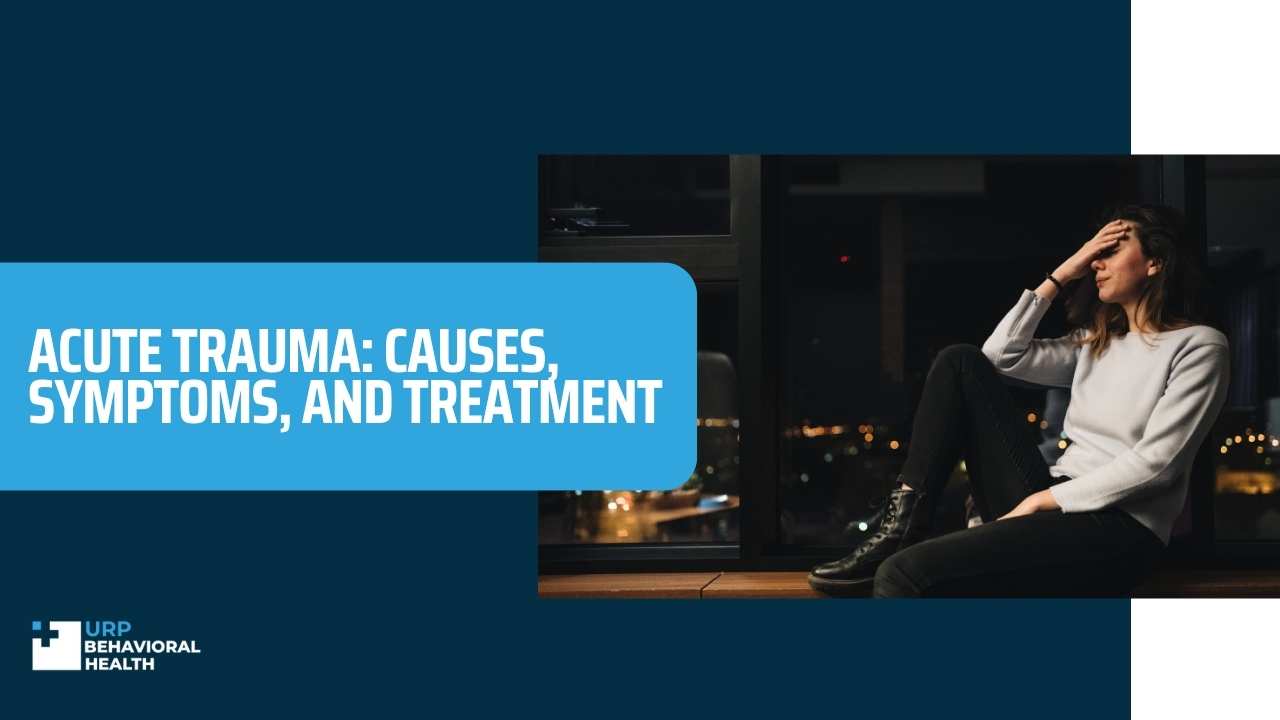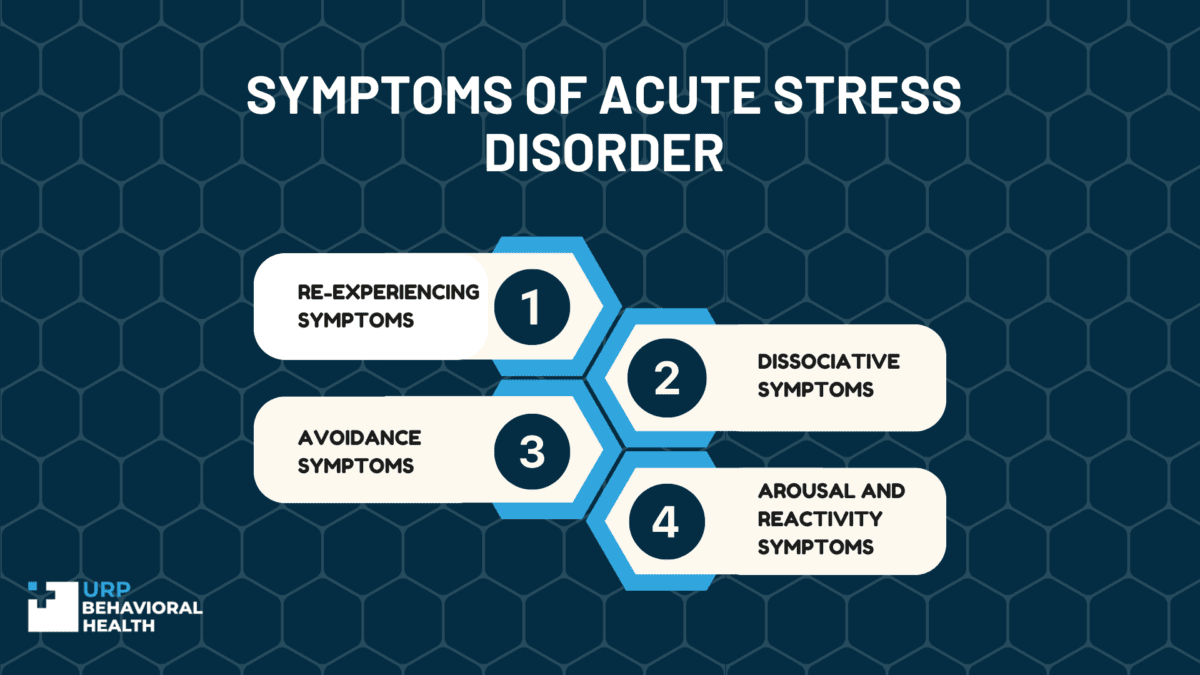Acute Trauma: Causes, Symptoms, and Treatment

According to a research article from the Psychological Medicine journal, over 70 percent of respondents reported a traumatic event. Meanwhile, 30.5 percent were exposed to four or more events. These studies show how trauma is a widespread phenomenon that affects many people around the world. This puts some people at risk of developing a trauma or stress-related disorder.
Because such conditions can take a toll on your physical and mental health, it’s worth looking at acute trauma and how it’s connected to acute disorder. Let’s go over the causes, symptoms, treatment approaches, and other aspects of acute trauma.

What is Acute Trauma?
Acute trauma is when you experience a single traumatic event that’s brief in duration and focused in nature, like a car accident or major injury. Going through a distressing event can cause your stress response, which is regulated by the sympathetic nervous system, to activate.
Although it’s normal for the sympathetic nervous system to kick in and help you prepare for danger, your stress response should deactivate once the threat has subsided. While this is the case with most people, the stress response remains activated in some cases. For these people, the sympathetic nervous system continues signaling to the body that the threat is still present, indicating a disorder
What is Acute Stress Disorder?
People who develop acute stress disorder (ASD) do so within a month after one or more traumatic events. The symptoms of ASD are similar to those of PTSD, except for the duration, which is between three days and a month.
Types of Events Leading to Acute Trauma
Acute trauma takes place as a result of exposure to one or more events, which can lead to feelings of fear and helplessness. Common examples of such events include:
- Witnessing other people dying
- Experiencing the threat of death
- Experiencing a serious injury
- Being involved in a road accident
- Going through a natural disaster
Statistics show that between 6 and 33 percent of people who go through a traumatic event eventually develop ASD.
Risk Factors of Acute Stress Disorder
Not everyone who experiences trauma develops ASD, as certain risk factors increase your susceptibility to the condition. These include:
- Experiencing or witnessing a previous traumatic event
- Having a history of PTSD or ASD
- Having a preexisting mental health condition, like an anxiety disorder
- Experiencing dissociative symptoms during traumatic events

Symptoms of Acute Stress Disorder
The symptoms of ASD, as outlined in the APA’s fifth edition of the Diagnostic Statistical Manual of Mental Disorders, are divided into three categories.
Re-Experiencing Symptoms
You may have intrusion or re-experiencing symptoms such as:
- Recurrent memories of the traumatic event, which cause immense distress.
- Seeing recurrent dreams with distressing content related to traumatic events.
- Reliving the traumatic event through flashbacks. This causes you to experience physical symptoms like sweating and rapid heart rate.
- Feeling intense psychological distress or a physiological reaction when you’re exposed to an internal and external cue that reminds you of the traumatic event.
Dissociative Symptoms
You can expect the following dissociative symptoms with ASD:
- Depersonalization is the feeling of being detached from your body and emotions.
- Derealization is the experience of feeling like your environment is unreal or unfamiliar.
- Dissociative amnesia is the experience of being unable to remember important details of a traumatic event.
- Having a reduced awareness of your surroundings or feeling emotionally unresponsive.
Avoidance Symptoms
You may avoid stimuli that remind you of the traumatic event. This includes people, places, objects, activities, feelings, and thoughts.
Arousal and Reactivity Symptoms
People struggling with ASD can experience anxiety and arousal symptoms like the following:
- Struggling to fall asleep and experiencing poor quality of sleep.
- Becoming irritable and aggressive with little to no provocation.
- Constantly being on guard and vigilant of your surroundings.
- Having unusually strong reflexive reactions to sudden events
In addition to these symptoms, an important symptom is negative mood, characterized by an inability to feel happy or successful.
Diagnostic Criteria
The diagnostic criteria of ASD are as follows:
- Exposure to a physically, mentally, or sexually traumatic event
- Having eight or more symptoms across five categories
- It should last for a minimum of three days and a maximum of four weeks
- The condition should cause significant impairment in areas of occupational, social, and daily living functions
- The disturbance should not occur as a result of substance abuse or a medical condition

Treatment and Management
Psychotherapy
In psychotherapy, you’ll have one-on-one sessions with your therapist, who will use approaches such as trauma-focused CBT to modify unhelpful thought patterns. Over the course of different sessions, you’ll work with your therapist to build better coping skills, including relaxation exercises like acceptance, mindfulness, and deep breathing. Other important aspects of the process are:
– Cognitive restructuring, in which you evaluate dysfunctional thoughts about the traumatic event to regulate your emotions.
– Gradual exposure, in which your therapist will gradually expose you to memories of the traumatic event. The purpose of this technique is to change how you respond to triggers while reducing emotional distress.
EMDR Therapy
This is an evidence-based practice that involves bilateral stimulation and reprocessing the traumatic memory so that it’s no longer distressing. In this therapy, your practitioner will expose you to bilateral stimulation while you focus on a specific traumatic memory. Then, you’ll repeat this process with other traumatic memories until the event is no longer distressing. The aim is to help you heal from distressing life experiences.
Medication
Your mental health practitioner may prescribe antianxiety medication or antidepressants to reduce symptoms such as anxiety and negative mood. However, it’s recommended to take medication as a secondary measure in combination with psychotherapy.
Let us guide you towards healing
We know that seeking treatment can be overwhelming, but our staff is here to make the process as smooth as possible. We’re available 24/7 to address any questions or concerns you may have.

